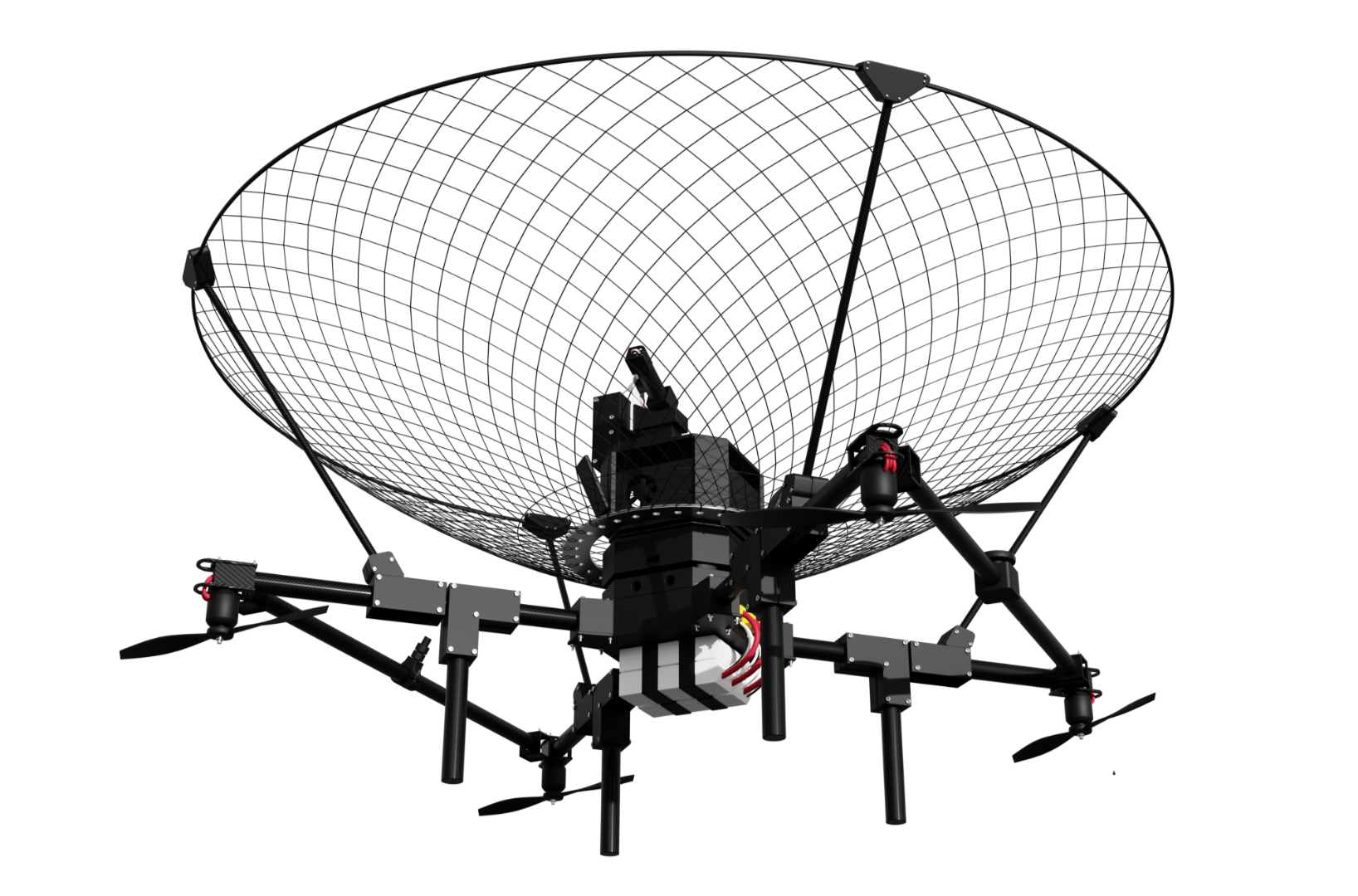
Orion:
Autonomous Drone Defeat System
KEY FEATURES
Its proprietary vision-based sensing system enables reduced target search time and space, a reliable target lock, and increased accuracy and agility
Fully autonomous kinetic interceptor using onboard AI-based target tracking and pursuit algorithms
Cued to target from ground assets, including gun-mounted target designator or the Zeus Command and Control (C2) Interface, using ground-based PDAR, PTZ and Acoustic Sensors
Multiple captures are possible within one flight
Patent status granted: UK, EU and US
A sophisticated and scalable solution
Our autonomous drone defeat system, ORION, has been explicitly designed to work in concert with our Air Intelligence System as the 'last resort' solution to unwanted UAV activity. Once a threat has been identified and the operator is satisfied that appropriate measures must be taken, ORION can be deployed at the push of a button.
As a fast and agile UAV (Uncrewed Aerial Vehicle), ORION is capable of tracking and capturing a variety of drones, regardless of whether they have been modified for illegal operations. Due to its being largely automatic, ORION is simple to operate and requires no specialised training. It has no ongoing 'consumables' costs, such as projectile nets, parachutes, or compressed gas. Orion has been designed to be cost-effective on every level, including ongoing maintenance costs.
ORION can be autonomously deployed directly from the Zeus interface, with initial navigational data coming directly from an AIS (Air Intelligence System). This data allows Orion to fly an intercept path directly towards the target, dynamically plotting its flight path as it receives new navigation data.
How It Works
On approach and within proximity, ORION uses its onboard navigation systems to detect and classify the target. A high-resolution live image feed of the 'target' is made available to the operator and other authorised parties for positive identification. This real-time image feed maximises operational safety and control whilst authorised personnel can make an 'intercept' decision. Orion will continue to plot a path to fly underneath the target autonomously to perform a successful soft-kill intercept if and when required. The mounted catch net 'snags' the threat aircraft, further preventing it from retaking flight.
This ability to securely capture multiple uncooperative drones per flight is especially vital in civilian airspace where jammers, directed energy weapons, and radio interference look impressive but offer no practical use beyond exhibitions. Orion has never 'dropped' a drone, obviating the need for projectile use in almost every scenario.
With the threat neutralised, Orion is free to return to its launch area or proceed to the next intercept should it be required in the same flight. Once the operator is satisfied that the airspace is clear, they can instruct Orion to return to base or to a designated safe drop zone with the rogue drone/drones safely within its custody and for the authorities to use as evidence.

AIR SECURITY ECOSYSTEM
Passive RF direction finding with over 5km range and multiple target detection capability.
AI-powered autonomous camera tracking system with integrated identification and classification.
Counter-drone system on your smartphone. Relay real-time images and location data to Zeus Control.
Passive acoustic direction finding with integrated AI threat identification and classification.
ZEUS CONTROL: C2 Central System
The Zeus 'Command and Control' C2 interface gathers data from multiple sources, including imagery, video, passive RF, and acoustics, then presents the data to the operator in a clear graphical format, providing operators with a seamless user experience and considerably reducing the potential for false positives through correlative validation.
ORION: Autonomous Drone Defeat System
Once a threat has been identified and you are satisfied that appropriate measures must be taken, Orion can be autonomously deployed directly from the Zeus interface. Orion plots a path to fly underneath the target for a successful soft-kill intercept.

Would you like more information?
Would you like further details on LiveLink Aerospace? We're here to answer any questions you may have. Please fill out the contact form, and a member of the team will get back to you as soon as possible.








